Top 5 Origin Place of Kungfu
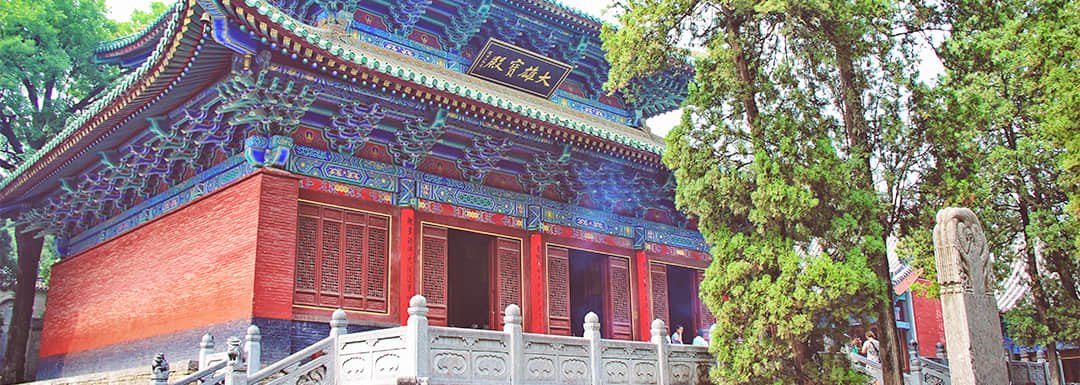
In Chinese culture, mountains have always had a great spiritual and religious significance. Holy sanctuaries of the sacred, truth and enlightenment, mountains have always lied at the heart of China’s major philosophical and religious traditions. While Buddhism designates four mountains as sacred sites of bodhimanda (places of awakening), in China’s traditional folk religion, five sacred mountains represent earthly incarnations of five cosmic deities. Placed in specific cardinal directions, they are said to form a protective rim around the Northern China Plain, the cradle of Chinese civilization. Four other sacred mountains, on the other hand, are home to the most renown Taoist monasteries, which, despite their fading wisdom and influence in the modern world, still attract to this day thousands of Taoist pilgrims yearly. Understandably, these mountains along with their sacredness have been centres of monastic life for hundreds of years. And that Kung Fu’s philosophical, spiritual and ritualistic underpinnings have always been intimately linked with the ethos of the monks and the hermits is no surprise: the highest forms of the practice are said to have originated in splendid isolation, underneath the peak of a mountain. In this article, we will delve into the places which are most commonly associated with the emergence of Kung Fu.
The Shaolin Monastery

Located on the northern slope of the Shaoshi mountain, which forms part of the sacred Song mountain chain, the Shaolin Monastery was founded under the patronage of the Emperor Xiaowen in the later part of the 5th century. In close proximity with Emperor Xiaowen’s capital, Luoyang, the monastery first served as a translation centre for Buddhist texts which were written in Sanskrit. It was only upon the arrival of the Bodidharma - a Buddhist monk from India- several decades later, that the Shaolin Monastery became a centre for learning Kung Fu. It is said that the mythical-historical figure of Bodidharma, upon realizing that the monks were unable to meditate properly because of their bad posture they had come to acquire by working on the scripts, introduced a number of exercises and different postures to improve their physical condition. Through these, the Shaolin monks are said to have explored the limits and potentials of their bodies to unprecedented levels. Following, the admission procedures to the monastery became notoriously harsh as the exceptionally demanding Kung Fu practice became an integral part of the daily routine of the monks. The will-power and skills that the latter developed and exhibited throughout the different techniques have been ever since the object of admiration and acclamation, worldwide. Having provided military assistance and loyalty to the Tang and Ming dynasties, the Shaolin monastery enjoyed a strong political backing and financially support from these. This assistance enabled the centre to bloom and to accommodate at its highest point 1500 monks. Today, Shaolin Kung Fu is the largest as well as the most well-known branch of Kung Fu, and its curriculum is famous for the incredible number of exercises, forms and techniques it offers. In 2010, Shaolin and its Pagoda Forest were classified as a UNESCO World Heritage Site.
The Wudang Mountains

Anyone having watched Ang Lee’s film Crouching Tiger, Hidden Dragon is already acquainted with the Wudang mountains and the prominent role they play in the world of Kung Fu. In Taoism, as we have mentioned already, there are four mountains that are deemed sacred. The scenic Wudang mountains, which offer breath-taking picturesque sights coupled with a beautiful complex of Taoist temples, pearls of architectural design and creative brilliance, are one of them. Despite being known as the birthplace of the so-called “internal” Kung Fu style, no records have been able to track down at which point in history the practice begun to emerge on the Wudang mountains. However, the first temple ever built dates back from the 7th century, during the early Tang period. Several hundred years later, during the Ming dynasty, major construction works took place on the mountain, as the Ming emperors lavishly attempt to associate their dynasty to Taoism in order to intensify the legitimacy of their rule. A stunning site composed of nine palaces, nine monasteries, thirty-six nunneries and an astounding seventy-two temples was then erected. The Wudang mountains and more specifically the Taoist hermit Zhang Sanfeng are known for the contribution of the concept of Neijia to Kung Fu practice. Zhang Sanfeng has also been credited to be a progenitor of Tai Chi, a style of Kung Fu that tends to be, in the West, more associated with the preservation of health and slow movements than with combat martial art. Wudang Kung Fu’s philosophical paradigm, which links morality and nurture with harmony in nature is still embraced as to this day it is common to see monks practicing outside in the mountain or on building rooftops of the complex.
Mount Emei
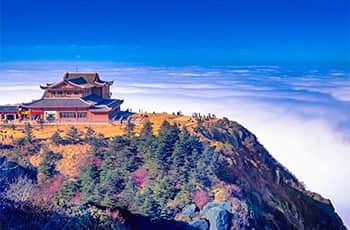
Carved in stone and measuring a dazzling seventy meters high, the Leshan Giant Buddha is the largest Buddha sculpture in the world. Across the river which runs under its feet, another sacred mountain sprawls out: Mount Emei. Aside of hosting seventy-six Buddhist monasteries, Mount Emei is foremostly known for being home to the oldest Buddhist temple in China, which was built in the first century AD. This impressive showcase of emblematic architecture harmoniously blends itself with the landscape, to reflect asceticism, serenity and grace. The Mount Emei erects itself amidst this symbolism as one of the original places in which Kung Fu was developed: indeed, the Emei Kung Fu is one of the oldest in its own kind, which was created during the Spring and Autumn periods of Chinese history. At the crossroads between Shaolin and Wudang, external and internal, and merging elements of both, the Emei style is known for its swift and flexible movements, the techniques of which are derived from the observation of monkey movements.
The Chen Village
The Chen village is a small family village, located deep in the Henan province of Central China. At first glimpse, there is nothing really remarkable about this village; yet, when one takes a closer look at the history of Kung Fu, the Chen Village is quite a curious place. Indeed, the Chen style of Tai Chi Kung Fu is the oldest of the five traditional family styles of Tai Chi, the most widely practised Kung Fu branch: millions in China practice Tai Chi daily. The founder of the Chen style of Tai Chi, Chen Wangting, was a distinguished general during the late Ming Dynasty. After the fall of the Ming Dynasty, he retired to his family hamlet, the Chen village. Legends claim that he learned Tai Chi Kung Fu from a disciple of Zhang Sanfeng, who became famous as he achieved immortality on the Wudang mountains.
Following, Chen Wangting established an ‘internal’ martial art school in his native village, which kept its doors open over the course of nineteen generations and still continues to operate to this very day. The Chen style, which combines Taoist philosophy, unique breathing exercises with the Chinese medical concept of ‘internal energy’, remained a well-kept secret by chosen family members in the Chen village, for more than three hundred years. It is said that Yang Luchan, one of the greatest masters in the history of martial arts, and the founder of Yang style Tai Chi, came to acquire his skillset as a teenager in the Chen Village.
Mount Hua
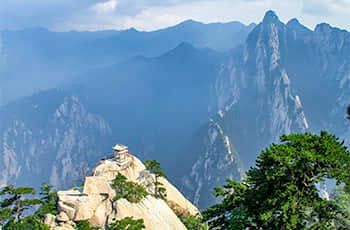
Not far from the site of discovery of the ancient Terracotta Army in the Shaanxi province, lies Mount Hua, which is distinguishable by its five peaks, which reach up to 2,134m. Associated with the god of the underworld, Mount Hua has been the object of long historical and religious significance, despite not having been a popular pilgrimage destination due to its remote and steep peaks. One story narrates how Cai Mao -a warrior in time of the Tang Dynasty- once killed a noble man in a fight and found refuge in Mount Hua’s wilderness, where he developed a martial art. During the Ming Dynasty, the practice he developed was codified by Cai Wanzhi, who put all of his knowledge of Mount Hua martial arts into a book titled “The secrets of Huanquan”. Falling both under the external and northern classifications, the Huanquan style or repertoire of moves is also considered to be one of the major contributors to the Northern Long Fist styles, as many of the original techniques have either been lost or appropriated by other styles. Today, Huanquan is considered to be more of a historical style of Kung Fu, remembered for its elegance and its effectiveness.
OR
Are you eager to begin your Chinese cultural journey?
Drop us a line and we will promptly connect you with our leading China expert!
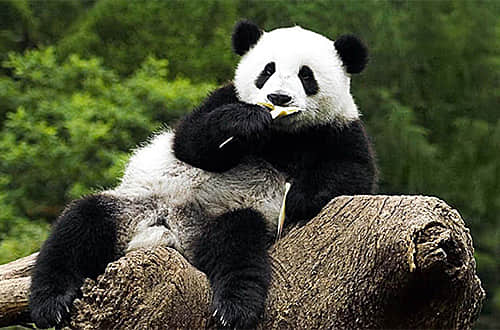 Best Places to See Pandas in China
Best Places to See Pandas in China 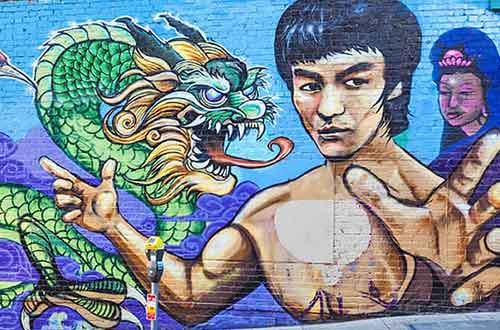 Shaolin Kung Fu Films
Shaolin Kung Fu Films 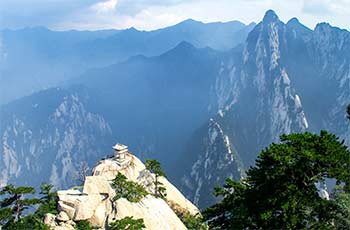 Mount Huashan, Mt. Hua
Mount Huashan, Mt. Hua 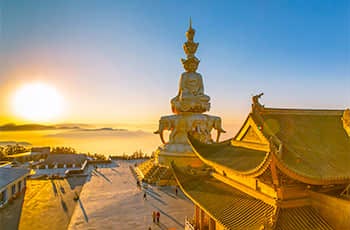 Mount Emei
Mount Emei